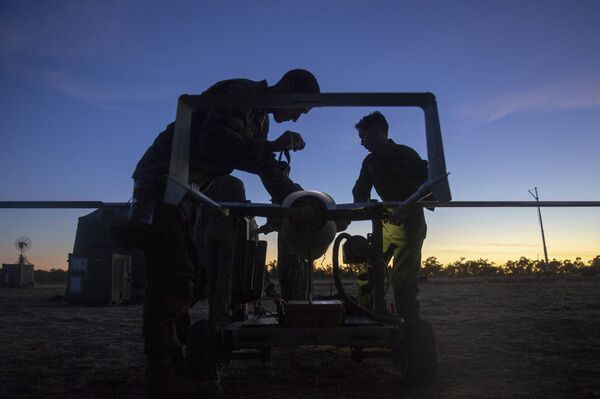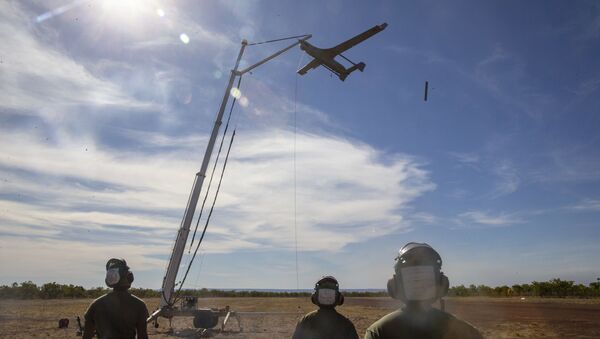"This is the RQ-21A's first deployment since we declared the squadron [fully operational]. It's very exciting for us,” US Marine 1st Lt. Trevor Ellingson expressed in a video recorded on August 11 at the Nackeroo Airfield’s Bradshaw Field Training Area of Australia’s Northern Territory. His remarks and interview footage were later published on Monday.
It’s unclear whether the 32-man squadron, which serves as the Air Combat Element (ACE) of the Marine Rotational Force - Darwin, launched the RQ-21A on August 7 or August 8, as both dates have been listed in US military releases.
“It’s pretty much a live feed that we see directly from the aircraft,” noted Ellingson, the ACE’s unmanned aircraft systems operator. “Basically we’re the eyes in the sky for the ground force commander.”
According to Ellingson, the RQ-21 is unique due to the fact that it does not require an airstrip to deploy. Furthermore, he noted, each team member is assigned a specific task prior to their commencement of establishing a spoke site.
“The spoke site, which enables [Marine Unmanned Aerial Vehicle Squadron] operators to fly the aircraft conveniently from the rear of a Humvee, also extends the range of the aircraft up to 150 nautical miles from the hub,” explained 1st Lt. Matthew Tatarka-Brown.
Due to COVID-19 novel coronavirus-related concerns amid the pandemic, US and Australian personnel were forced to push the joint training back by two months, reported Cpl. Harrison Rakhshani.
Ellingson explained that speed and individual efficiency also factored into the squadron’s decision to not "bring a lot of manpower.” Some 1,500 of the original 2,500 Marines slated for the rotation were cut.
While the ACE was ultimately narrowed down to 32 Marines, the service had originally intended for the group to be made up of “several squadrons of manned aircraft including MV-22 Ospreys.”

“I lead a small group of Marines in detaching from the main body to set up the spoke site,” Tatarka-Brown said.
“We got it up within an hour and 10 minutes, but we’re always aiming to get it up quicker,” he said, referring to the spoke site specifically.
Ellingson explained that with a reduction in troops and an emphasis on designated tasks, personnel at spoke sites required approximately seven hours “to get a bird up in the air.”
“Out here, we're training to be fast, agile, to be able to set up, get a bird in the sky as fast as we can, and teardown quickly,” he argued.


